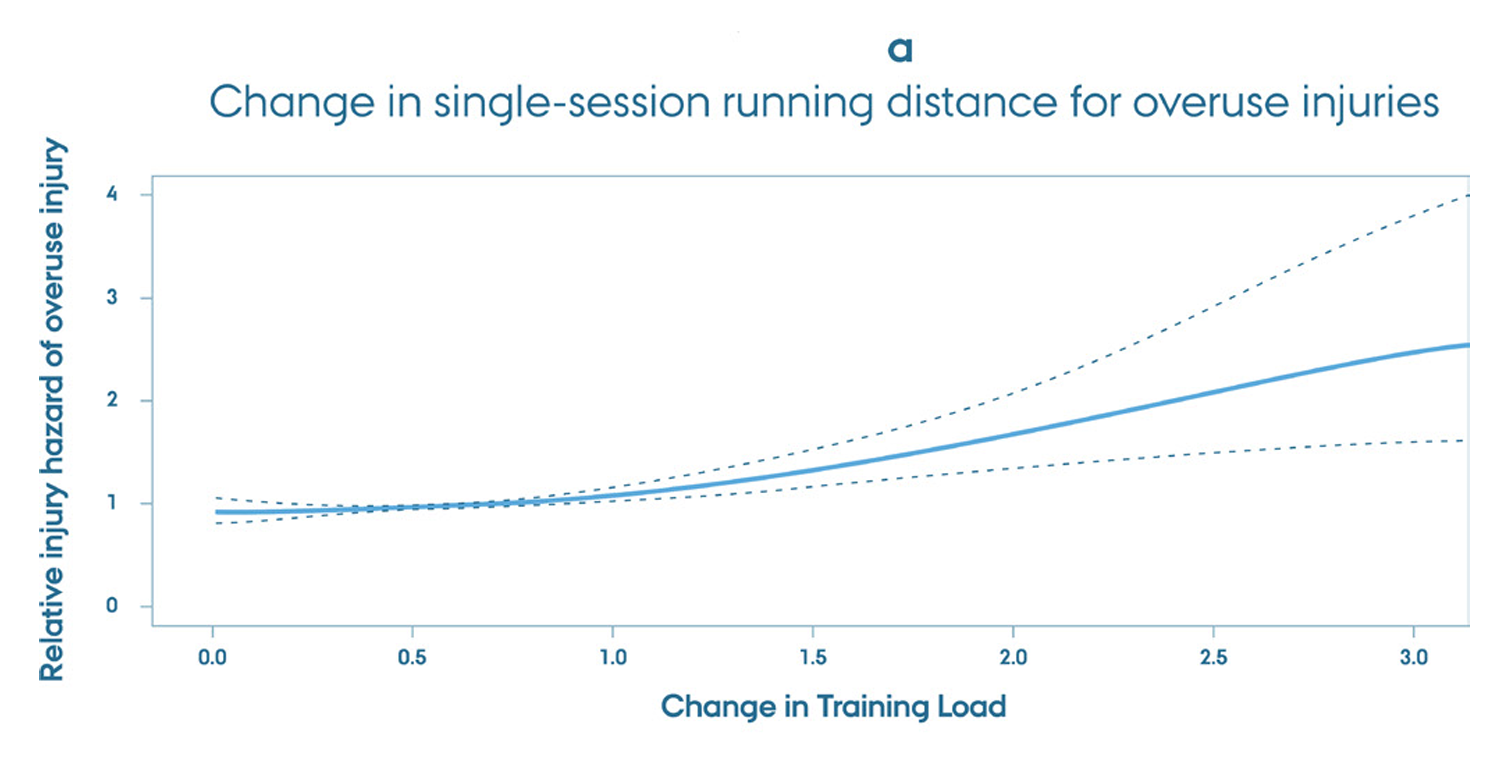Injury is the leading cause of runners discontinuing training.
Despite widespread adoption of wearable devices and load-monitoring tools designed to help manage training progression, guidance on what constitutes "too much" running has remained debated.
This study aimed to determine whether spikes in running distance, either during a single session or over a week, were associated with increased risk of overuse running-related injuries.
The goal was to determine whether injury risk is more strongly tied to sudden spikes or gradual weekly changes.
Does an acute spike in distance during a single run or a week predict increased injury risk, and how big is “too big” of an increase?
What Did the Researchers Do?
Study Design
- Prospective cohort study over 18 months with 5,205 adult runners (mean age 45.8 years; 22% female) from 87 countries using Garmin wearable devices
Exposures
- Single-session distance relative to longest run in previous 30 days
- Week-to-week ratio in running volume
- Acute:Chronic Workload Ratio (ACWR): this week’s total vs average of previous 3 weeks
Outcome
- Self-reported overuse of running-related injuries
What Were the Results?
In the cohort of 5,200 runners, 35% of runners reported an injury; 72% were classified as overuse injuries.
Injury risk increased significantly when a runner’s single-session distance exceeded 10% more than their longest run in past 30 days:
- Small spike (>10%-30% increase): HRR = 1.64
- Moderate spike (>30%-100% increase): HRR = 1.52
- Large spike (>100% increase): HRR = 2.28
No relationship between injury risk and either the week-to-week ratio or the ACWR. In fact, higher ACWR was paradoxically associated with slightly lower injury risk.

What Does This Mean?
- A single run that exceeds 10% of the runner’s longest run in the previous 30 days meaningfully increases injury risk.
- Metrics like ACWR and week-to-week ratios, although widely used and built into wearable technology, may not provide actionable guidance for running injury prevention.
- Coaches and healthcare professionals should focus on avoiding sudden spikes in individual session distances when advising runners.
Limitations
- Injury reporting was self-reported.
- Distance was the sole measure of load, not accounting for other important factors like intensity, terrain, or fatigue.
- Observational design prevents causal inference.
Coach’s Takeaway
- Avoid single-session distance increases exceeding 10% of a runner’s longest run in the previous 30 days.
- Weekly averages or ratios may not adequately reflect injury risk from large single-session spikes.
- Even small but repeated increases in a short period can accumulate risk if insufficient recovery is provided.
I hope this helps,
Ramsey
Reference
Schuster Brandt Frandsen J, Hulme A, Parner ET, et al. (2025). How much running is too much? Identifying high-risk running sessions in a 5200-person cohort study. Br J Sports Med. doi:10.1136/bjsports-2024-109380




